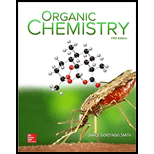
(a)
Interpretation: The identification of polar molecules is to be done and the direction of the net dipole is to be shown if one exists.
Concept introduction: The polarity of a molecule depends upon the electronegativity difference between the atoms. The electronegativity difference predicts the directions of bond dipoles. A polar molecule possesses net dipole, whereas a non-polar molecule does not possess net dipole moment.
(b)
Interpretation: The identification of polar molecules is to be done and the direction of the net dipole is to be shown if one exists.
Concept introduction: The polarity of a molecule depends upon the electronegativity difference between the atoms. The electronegativity difference predicts the directions of bond dipoles. A polar molecule possesses net dipole, whereas a non-polar molecule does not possess net dipole moment.
(c)
Interpretation: The identification of polar molecules is to be done and the direction of the net dipole is to be shown if one exists.
Concept introduction: The polarity of a molecule depends upon the electronegativity difference between the atoms. The electronegativity difference predicts the directions of bond dipoles. A polar molecule possesses net dipole, whereas a non-polar molecule does not possess net dipole moment.
(d)
Interpretation: The identification of polar molecules is to be done and the direction of the net dipole is to be shown if one exists.
Concept introduction: The polarity of a molecule depends upon the electronegativity difference between the atoms. The electronegativity difference predicts the directions of bond dipoles. A polar molecule possesses net dipole, whereas a non-polar molecule does not possess net dipole moment.
(e)
Interpretation: The identification of polar molecules is to be done and the direction of the net dipole is to be shown if one exists.
Concept introduction: The polarity of a molecule depends upon the electronegativity difference between the atoms. The electronegativity difference predicts the directions of bond dipoles. A polar molecule possesses net dipole, whereas a non-polar molecule does not possess net dipole moment.
Want to see the full answer?
Check out a sample textbook solution
Chapter 1 Solutions
PKG ORGANIC CHEMISTRY
- Which of the following molecules is most polar? (Na=1.0; C=2.5; H=2.5; Cl=3.0; F=4.0; O=3.5) a. h2o b. Nacl c. HF d. C2H6arrow_forwardWhich compound does NOT have a bent molecularshape?A. Be H 2 C. H 2 OB. H 2 S D. Se H 2arrow_forwardWhich of the following molecules are polar?I. PF5 II. SF4 III. SiF4 IV. XeF4 a. I only b. II only c. I and II d. I, II, and III e. II, III, and IVarrow_forward
- Which of the following is a nonpolar covalent molecule? A. NH3 B.H20 C. HCl D. CCl4 2. Which of the following has the highest boiling point? A. NaCl B. HBr C. CH3CH2CH3 D. CCl4 3. Which of the following molecules has a dipole moment? A CCH B. O2 C. NH3 D. CO2arrow_forward11. Which of the following molecules does NOT have a tetrahedral geometry at its central atom? A. Carbon tetrachloride (CCI4) B. Phosphonium cation (PH4*) C. Tetrafluoroborate anion (BF4') D. Xenon tetrafluoride (XeF4) E. All of these molecules have a tetrahedral geometry at their central atoms 12. Which of the following statements best describes ALL chemical bonds? A chemical bond is... A. ..the line drawn between two atoms in a molecule. B. ...an attractive force between atoms that places them adjacent to each other in space. C. ...the result of gravity between two atoms. D. ...the force between two ions of opposite charge. E. None of the above are correct.arrow_forwardWhich molecule would have the largest dipole? A.AsH3 B. C2H6 C. CO2 D. NCl3arrow_forward
- 11. What is the electron-domain geometry of water molecule (H2O)? a. bent b. tetrahedral c. trigonal planar d. linear 12. Write the correct Lewis dot structure for O2. Which statement correctly describes the structure of the whole molecule? a. There is a double bond and four lone pairs. b. There is a double bond and six lone pairs. c. There is a single bond and six lone pairs. d. There is a single bond, a double bond, and six lone pairs. 13. If there are four (4) electron pairs around the central atom of a molecule, these electron pairs are in a/n a. trigonal planar b. trigonal pyramidal arrangement. C. octahedral d. tetrahedral 14 The molecular geometry of the molecule NF3 is a. linear b. trigonal pyramidal c. tetrahedral d. trigonal planar 15 Which of the following species will exhibit tetrahedral molecular geometry? d. PCI5 a. CCI4 b. CO2 C. O3arrow_forwardEvaluate the molecular geometry, hybridization and polarity of a covalent molecule. Cinnamic aldehyde, C6H5CH=CHCHO, is a covalent compound. What bond makes this a polar molecule? Show the polar bond(s) if any on the structure provided below. Comment on the hybridization and geometry present in this molecule. H. H Н. H H. H.arrow_forwardWhich of the following molecules is polar? A. CH4 B. SO2 C. SO3 D. CO2arrow_forward
- Which pair of molecules will show hydrogen bonding? I. HF and NH3 II CH,Cl and HCI I. CH4 and CH3CH3 IV. CH3OH and CH,CH3 V. H2O and CH,OH O I and V O I and IV O I V only O Il and V O I and IIIarrow_forward1) Which type of intermolecular interaction would be the strongest in each substance (between molecules of the same substance)? It may help to draw the Lewis structures first. a. Ammonia, NHs. b. Bromine, Bra c. Hydrogen Chloride, HCl, d. Methane, CH4arrow_forward15. Which of the following molecules are polar? Group of answer choices A. CO2 B. BH3 C. H2O D. CH4arrow_forward
 Chemistry & Chemical ReactivityChemistryISBN:9781133949640Author:John C. Kotz, Paul M. Treichel, John Townsend, David TreichelPublisher:Cengage Learning
Chemistry & Chemical ReactivityChemistryISBN:9781133949640Author:John C. Kotz, Paul M. Treichel, John Townsend, David TreichelPublisher:Cengage Learning Chemistry & Chemical ReactivityChemistryISBN:9781337399074Author:John C. Kotz, Paul M. Treichel, John Townsend, David TreichelPublisher:Cengage Learning
Chemistry & Chemical ReactivityChemistryISBN:9781337399074Author:John C. Kotz, Paul M. Treichel, John Townsend, David TreichelPublisher:Cengage Learning

